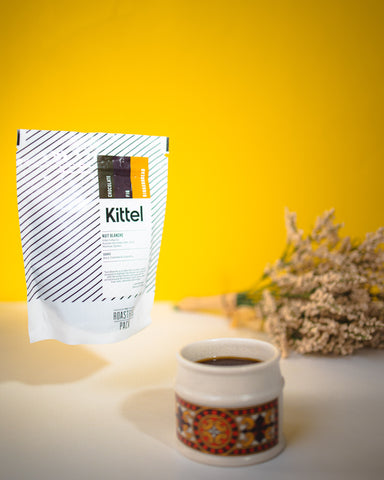
Coffee blends, some people love ‘em, other people avoid ‘em. Oftentimes they are dismissed as a way to get rid of excess coffee or to cheaply throw something together, but more often than not, they are meticulously created to highlight and accentuate different flavours in coffee.
Don’t take our word for it though, Liam Robichaud the Director of Coffee at Kittel Coffee in Montreal can attest to this too:
“With our year-round blends as well as our Festival blends, we are never trying to pass a “cheap" coffee through a blend. We build specific flavour profiles and uses, whether it be classic, nutty, or rich espresso that pairs well with milk.”
Crafting the perfect coffee blend can be a lot of trial and error, but here are five steps to get you started!
1. Educate Yourself on Coffee
This is imperative to creating the perfect blend. Understanding the different taste profiles of each region can come in quite handy, (ex. knowing that coffee from Kenya will taste fruity and bright, whereas beans from Brazil will lean more chocolatey and nutty). Once you have a good comprehension of flavour, you can start to figure out which coffees will blend well together.
2. Choosing A Sweet Base Note
You want to start with something that carries a heavy sweetness, usually a chocolatey or nutty coffee from Brazil or Peru. This is your foundation to build the rest of your blend upon.
3. Finding that Mid-Palate Satisfaction
This is where you’ll want to find coffees that are juicier or contain malic acid; think notes such as apple or stone fruit. A Costa Rican or Guatemalan bean would be perfect here.
4. Hitting Those High Notes
For this, you’ll want to find something that will provide enough citric acidity and floral notes, such as an Ethiopian or Kenyan bean. Something that will linger pleasantly in the aftertaste without being too overpowering.
5. Knowing Your Ratios:
A general rule of thumb is to use a 4:4:2 ratio of the above (40% Base Note, 40% Mid-Palate, 20% High Note). Though, like all great things, rules are meant to be broken. Jonathan Cox, the Head Roaster at Propeller Coffee Co. in Toronto can back us up with regards to their Outbound espresso blend:

“Right now, this is a 5:4 blend of Brazil Cachoeira de Grama and Ethiopia Makiso. This is a double natural blend, which is new for us, but allowed us to nail our desired flavour profile for Outbound while simplifying the recipe for lower production during 2020s lockdowns. (Outbound is usually a 3-component blend, which requires us to roast much more coffee at a time because each component has a minimum batch size.) The specific ratio is a happy accident. We found it worked extremely well, so we didn't feel the need to change it. If it ain't broke, right?”
While you can follow certain guidelines and research to create the perfect coffee blend, the most important guideline is to just drink a coffee and ask yourself, how can I make this delicious blend even more delicious?






